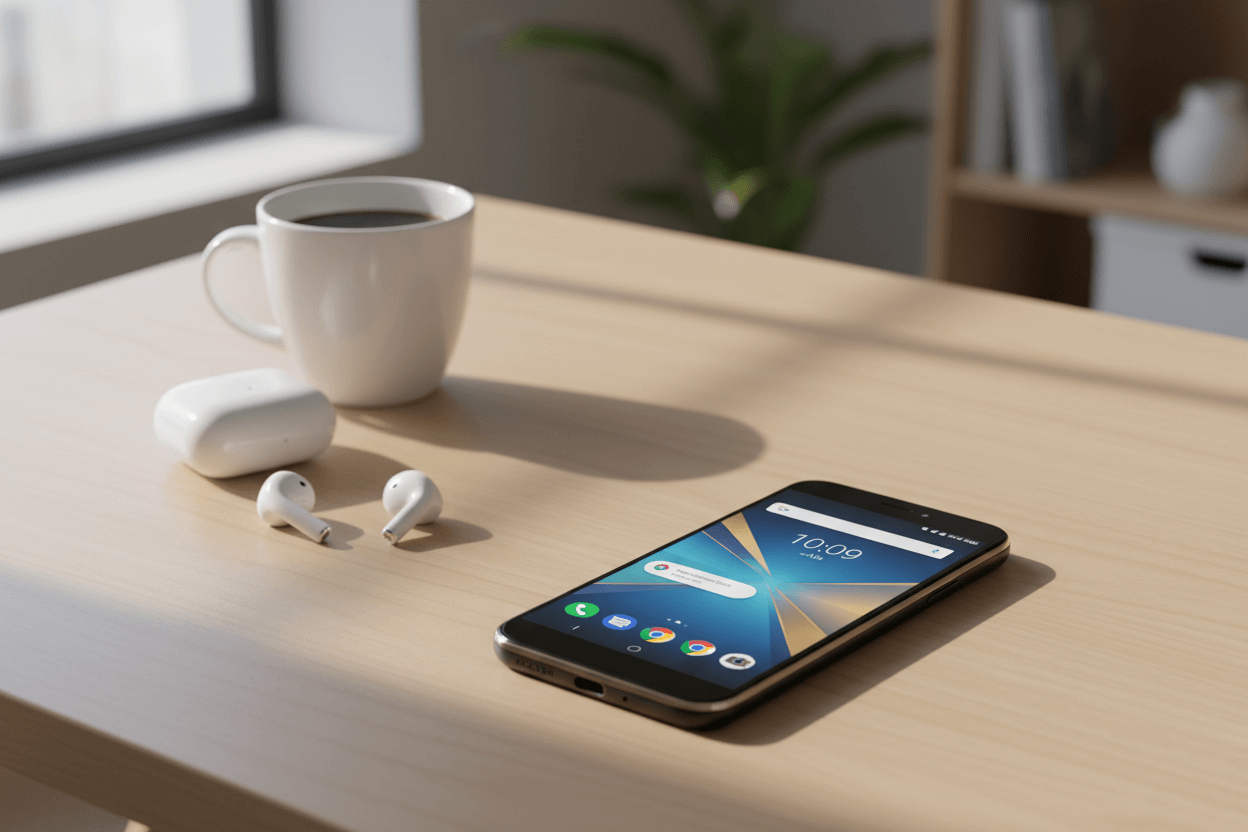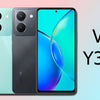Experience crystal-clear displays on the Alcatel V3 Classic.

Introduction of Alcatel V3 Classic
In today’s smartphone-driven world, the Alcatel V3 Classic stands out by offering a compelling balance of feature-rich display experience and affordability. If you’re searching for a device that delivers a crystal-clear display, smooth usability, and modern connectivity at a reasonable cost in India, the Alcatel V3 Classic deserves a serious look. In this blog, we will explore in depth its display performance, specifications, price in India, camera capabilities, battery life, design and user experience — concluding with whether it is a smart buy in 2025. We’ll also address five frequent questions users ask before purchase.
Display: The Show-Stopper Feature
One of the major attractions of the Alcatel V3 Classic is its display. The device features a 6.67-inch IPS LCD panel with HD+ resolution (720 × 1600 pixels) and a 120 Hz refresh rate.
The 120Hz refresh rate translates into noticeably smoother scrolling, swifter UI transitions and better responsiveness when compared with standard 60Hz displays. For viewing videos, browsing or playing lighter games, the higher refresh makes a real difference.
In addition to refresh rate, Alcatel touts its NXTVISION display (or “NXTVISION Superior Display” for this model) which enhances colour accuracy and clarity. While the Classic model does not include the full NXTPAPER technology (that is featured in its Pro and Ultra siblings), the display still delivers a “crystal-clear” feel for its class.
For users in India, this means better readability even under indoor lighting, and decent outdoor legibility. Given typical budget smartphone compromises, the display here is a strong plus. That said, since it is still “HD+” and not full-HD, pixel density is modest 263 ppi, which means keen eyes might detect some softness in fine text.
Verdict on display: The Alcatel V3 Classic offers an above-average display experience for its price bracket in India — with high refresh rate and good usability. If you are particularly display-conscious — for reading, web browsing or just smooth UI — this phone delivers well.
Price in India & Value Proposition
In terms of cost, the Alcatel V3 Classic launched in India with starting price around ₹12,999(approx.) for the 4 GB + 128 GB variant. Subsequently, listings show competitive pricing and occasional discounts bringing variants to around ₹9,999(approx.).
For what you get — strong display, 5G connectivity (since it uses MediaTek Dimensity 6300), decent battery and modern Android version — the pricing makes sense. It positions itself well for buyers who want a balanced smartphone without spending a premium.
When comparing to other phones in the same price range in India, the display refresh rate and feature set make the Alcatel V3 Classic stand out. If you can catch a deal or promotional offer (bank discount, exchange bonus) then your value becomes even stronger.
Specifications & Features Overview
Let’s dig into the key specs of the Alcatel V3 Classic so you have a clear picture of what the phone brings to the table:
-
Processor & connectivity: Powered by the MediaTek Dimensity 6300 (octa-core), supporting 5G, ensuring future-proof connectivity.
-
RAM & Storage: Configurations include 4GB or 6GB RAM + 128GB internal storage — a generously sized storage for the category. Expandable storage via microSD is supported in many listings.
-
Display: 6.67″ HD+ (720 × 1600) panel at 120Hz refresh rate. Punch-hole camera design, 2.5D glass.
-
Cameras: Rear: 50 MP main sensor + 0.08 MP QVGA (on some specs) or simpler secondary sensor; Front: 8 MP selfie.
-
Battery & charging: 5,200 mAh battery in many listings, with support for fast charging (around 18W in some listings).
-
Other features: Android 15 out of box, often includes dual stereo speakers, NFC, IP54 water & dust resistance in some markets.
Given this spec sheet, the Alcatel V3 Classic ticks many boxes for a mainstream buyer in India: big screen, smooth refresh rate, modern OS, wide storage, and future-ready 5G.
Camera Performance
While the headline is about the display, it’s worth evaluating how the camera setup complements the overall experience. The Alcatel V3 Classic’s 50 MP main rear sensor is respectable for daylight photography — it allows capturing decent detail when lighting is good. The front 8 MP selfie camera is adequate for social media use and video calls.
Real-world reviews indicate the camera performs well for casual usage, but you should not expect flagship-level low-light photography or professional grade dynamic range. The secondary rear sensor in some spec listings is very low resolution, likely for depth or aesthetic effect rather than functional photography.
For the Indian buyer who primarily uses his/her phone for Instagram, WhatsApp, YouTube and everyday snapshots, the camera is an acceptable match to the price. However, if photography is your top priority, you might want to consider higher-end options.
Battery Life & Usage Experience
With a 5,200 mAh battery, the Alcatel V3 Classic is well placed to deliver a full day of usage under typical Indian conditions (social media, streaming, calls). The large screen and high refresh rate may draw more power than standard 60Hz displays, but the efficient Dimensity 6300 chipset helps here.
Fast charging support (in some variants 18W) means less downtime. Users who engage in moderate activity (videos, browsing, some gaming) should be satisfied with battery life. For heavy gamers or power users, the battery might deplete faster, in which case real-life usage needs to be monitored.
Design, Build & User-Experience
The phone’s design is contemporary — a punch-hole selfie camera, 2.5D glass, and slim profile (~8.16 mm thickness) according to spec sheets. The weight (~187g) is comfortable for one-hand use, given the large display.
Special features like stereo speakers, NFC, IP54 rating (some listings) add to usability. The high refresh rate of 120Hz makes the UI feel snappy and more premium than typical entry-level phones in India. Switching between apps, scrolling through feeds, navigating menus — these all feel smoother, delivering a “premium display experience” rather than just claims.
One caveat: the display is HD+ and not Full-HD, so under very close use or for power users the sharpness is less than highest-tier phones. But for the target audience this is a fair trade-off to keep cost and battery in check.
Display Experience in Everyday Use
In practical terms, how does the display impact your daily experience?
-
Scrolling and browsing: Feels noticeably smoother thanks to 120Hz refresh.
-
Video streaming & media: Big display gives immersive feel; while not full-HD, resolution is adequate for casual viewing.
-
Gaming: Casual games benefit from the refresh rate, but heavy titles may push the hardware.
-
Outdoor use: Good readability in many light conditions, though in direct bright sunlight you may find it slightly less sharp than premium phones.
-
Eye comfort: The company emphasises visual clarity; even though the Classic model lacks full NXTPAPER (found in Pro/Ultra), the display is designed to be easier on eyes compared to older budget models.
Who Should Buy the Alcatel V3 Classic?
Yes, it’s a good fit if you:
-
Want a big screen with smoother refresh (120Hz) on a budget.
-
Use your phone primarily for everyday tasks: calls, WhatsApp, social media, streaming.
-
Appreciate modern connectivity like 5G and larger storage (128GB) at an affordable price.
-
Value display quality and smooth UI over ultra-top camera or highest performance.
Maybe skip / choose other if you:
-
Need top-tier camera performance (night mode, ultra-wide, professional photography).
-
Are a heavy gamer demanding highest frame-rates and full-HD visuals.
-
Want a Full-HD+ (1080p) display or OLED screen rather than HD+.
-
Require brand-ecosystem features, ultra-fast charging or extremely long update support.
Pros & Cons Summary
Pros:
-
120Hz refresh rate display offers smoother UI and scrolling.
-
Big 6.67″ screen delivers immersive viewing.
-
Good value: large storage + modern chipset.
-
Decent battery size for daily use.
-
Modern OS (Android 15) and connectivity (5G).
Cons:
-
Display resolution HD+ (not Full-HD) so less sharpness.
-
Camera is adequate but not class-leading.
-
Some premium features (like full NXTPAPER, ultra-fast charging) reserved for higher models.
-
Brand may have less widespread service network compared with some incumbents (worth checking).
Final Verdict
If you focus strongly on the display experience and want a smartphone that “feels smoother” and offers modern features without costing a fortune in India, the Alcatel V3 Classic is an excellent option. The combination of a 120Hz big screen, decent specs and solid battery life positions it competitively in the mid-budget segment.
While it may not beat the flagship phones in camera or screen resolution, for many everyday users in 2025 it delivers more than enough. For budget-conscious buyers who priorities display clarity and usability, this phone hits the sweet spot.
FAQs of Alcatel V3 Classic
Q.1. What is the price of the Alcatel V3 Classic in India?
The launch price was around ₹12,999(approx.) for the 4 GB + 128 GB variant, and some listings now show around ₹9,999(approx.) or lower depending on discounts.
Q.2. What refresh rate does the display of the Alcatel V3 Classic have?
The display supports a 120Hz refresh rate, enabling smoother scrolling and transitions.
Q.3. How good is the camera on the Alcatel V3 Classic?
The phone features a 50 MP main rear sensor and an 8 MP front camera. For daylight and casual use it performs well; however, it is not targeted at high-end photography.
Q.4. How long does the battery last on the Alcatel V3 Classic?
With a 5,200 mAh battery (in many listings) and moderate usage, you can expect a full day of battery life; heavy usage will drain faster.
Q.5. Is the Alcatel V3 Classic worth buying in India in 2025?
Yes — if your focus is on a high-refresh display, large screen size and modern connectivity at a budget-friendly price. If you priorities ultra-high camera specs or full-HD display, you might want to explore higher-end alternatives.





